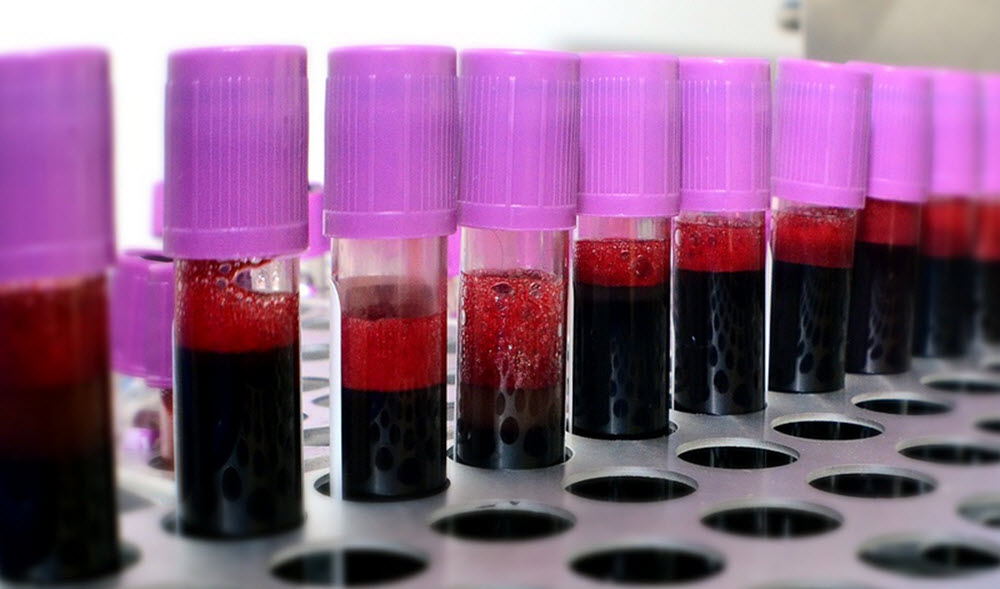Contents
In the human body, our blood has many different functions, including:
– Transporting oxygen from the lungs to the other parts of the body
– Transporting nutrients from the digestive system to the other parts of the body
– Bringing waste products from all parts of the body to the kidneys and liver
– Transport chemical messengers throughout the body, including hormones
– Help the body regulate its temperature
– Help the body regulate its fluid balance
– Carrying antibodies and cells to parts of the body that are injured or infected
– In case of injury, the blood clots to prevent excess loss of blood
 Components
Components
The four main components of human blood are red blood cells, white blood cells, platelets (thrombocytes) and plasma.
The blood that runs through the arteries, veins and capillaries is known as whole blood and contains roughly 55% plasma and 40%-45% blood cells by volume.
What is plasma?
Plasma is a mixture of water, sugar, fat, proteins and salts.
Red blood cells (RBCs)
Red blood cells, also known as erythrocytes, make up roughly 40-45% of the human blood volume. Our blood is red because of the red blood cells. The red blood cells are red because they contain a red protein (hemoglobin).
The hemoglobin in our blood carries oxygen from the lungs to the rest of the body, and then returns carbon dioxide to the lungs so the carbon dioxide can be exhaled.
The red blood cell is a biconcave disc where both faces of the disc have a shallow bowl-like indentation in the centre. There is no cell nucleus, and this lack of nucleus makes it easy for the red blood cell to change shape if needed to fit through blood vessels. At the same time, this flexibility limits the lifetime of the RBC, as it sustains damage to its membranes inside the smallest blood vessels. On average, a red blood cell will live for three months.
Red blood cells start as immature cells in the bone marrow and is not released into the bloodstream until they have matured for roughly a week. The production of red blood cells depends on the hormone erythropoietin, which is produced chiefly in the kidneys.

White blood cells
White blood cells, also known as leukocytes, form an important part of the body´s system for fighting infections.
Roughly 1% of the blood is comprised of white blood cells, but the exact number of white blood cells vary and can increase notably when needed to fight infection.
There are several types of white blood cells, with different capacities. The most common type is the neutrophil. Normally, circa 55-70% of a person´s total white blood cell count will be neutrophils. Neutrophils die within 24 hours, so the body is constantly producing new neutrophils to replace the old ones. This production takes place in the bone marrow.
The second most common type of white blood cell is the lymphocyte, and the two most common lymphocytes are the T-lymphocytes and the B-lymphocytes. T-lymphocytes help regulate other cells within the immune system, and will also directly attack various infected cells and tumours. B-lymphocytes have the capacity to produce antibodies. Antibodies are proteins that specifically target certain bacteria, viruses and other pathogens.
Platelets
Platelets, also known as thrombocytes, are sometimes referred to as blood cells but they are actually not cells – they are just small fragments of cells. They ”live” for roughly 6 days.
Platelets are required for the blood to clot (coagulate). When an injury occurs to a blood vessel, platelets will gather to the site and stick to the lining of the damaged vessel. They form a platform on which blood coagulation can occur. A fibrin clot is produced to cover the wound and keep the blood from leaving the blood vessel. Eventually, the fibrin will also function as a support system for new tissue that is formed to heal the injury.
What is a ”Complete Blood Count”?
If you visit a physician, it is possible that they will order a complete blood count (CBC) for a sample of your blood, because a CBC can provide the physician with important information about what´s going on in your body.
The CBC is actually not one single test; it is a group of tests. Today, a CBC is typically carried out using an automated instrument capable of doing both counts and measuring the physical features of certain cells.
A standard CBC includes both red blood cell tests, white blood cell tests and platelet tests.
Blood types
There are four blood types: A, B, AB and 0.
In addition to this, your blood will be either Rh-positive or Rh-negative.
Example: Sarah has the blood type A and is Rh-positive. Her blood is A+.
 Components
Components